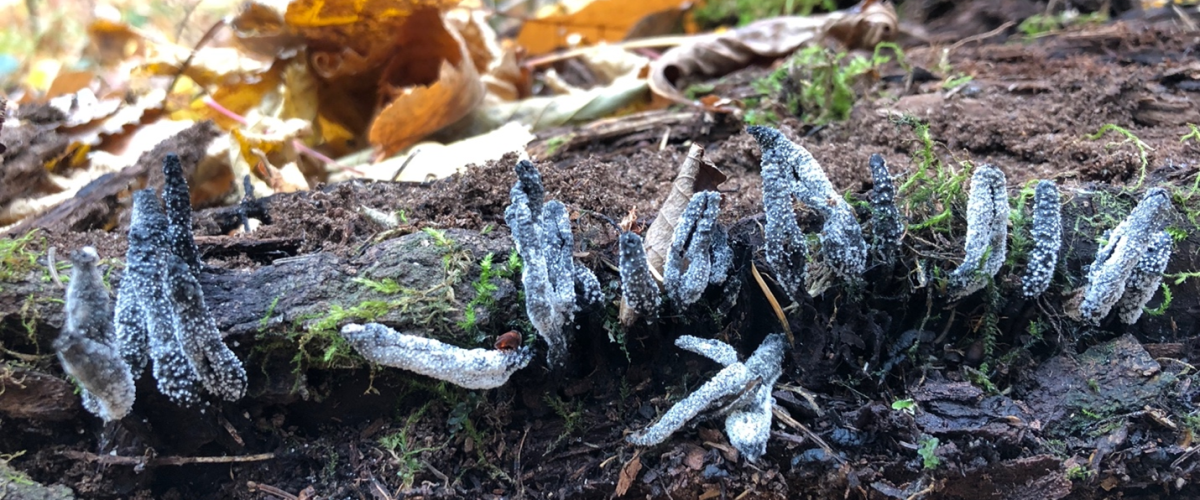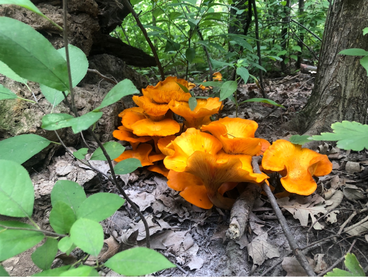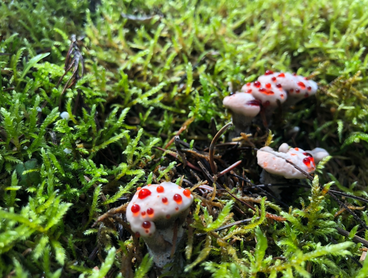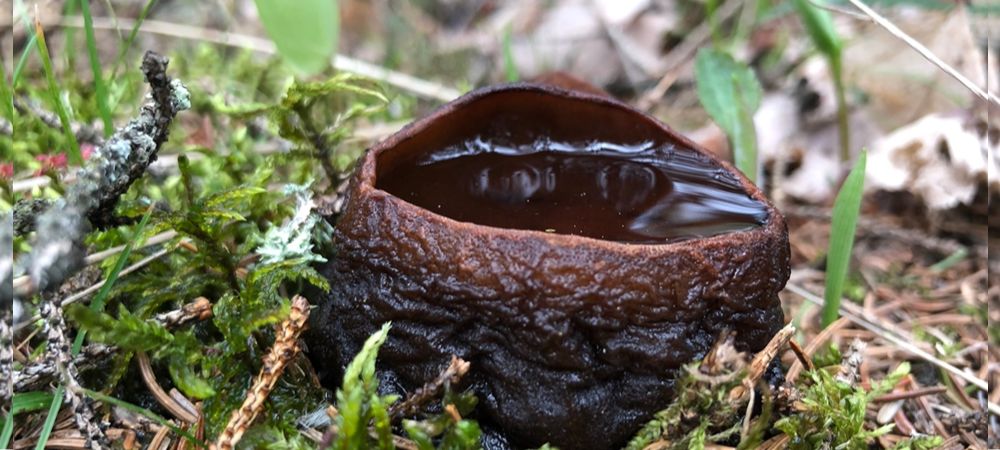
Mycological magic: Identifying spooky mushrooms with a plant pathologist

Pictured above: Dead Man's Fingers fungus

As Halloween approaches and the air grows crisp, delve into the enchanting world of mycology—the study of fungi. Mushrooms, with their mystical appearances and intriguing life cycles, seem right at home in the spooky season.
Nick Rajtar (‘18 Plant Science), PhD candidate in Plant Pathology and mycologist at the University of Minnesota, identifies some of the mycological world’s eeriest fungi and slime molds that might make even seasoned foragers think twice about venturing into a dark forest at night.
Dead man’s fingers (pictured top) is the name of a mushroom-like fungal growth that can be found at the base of dead or dying trees and shrubs or wooden objects that are in contact with soil. Dead man’s fingers is the sexual reproductive structure of the fungus Xylaria.

Rajtar and fellow members of the Blanchette Lab recently published work on the diversity and abundance of Xylaria found in the Ecuadorian Amazon Rainforest. The remarkable diversity found in this study from surveys of just a single plot location suggests an enormous number of Xylaria species exists across the entire Amazon rainforest, and new research efforts are needed that focus on this important group of fungi.
Whether you're a seasoned mycophile or a newcomer to the world of fungi, there's always something new and mysterious to discover. Get involved in the bewitching world of mycology through the UMN Mycology Club or visit a new exhibit at the Wangensteen Historical Library, “Mycophobia/Mycophilia: Fungi in Sickness & in Health,” on display through early January.

Photos provided by Nick Rajtar (‘18 Plant Science), PhD candidate in Plant Pathology and mycologist at the University of Minnesota. Get in touch @NickRajtar.





